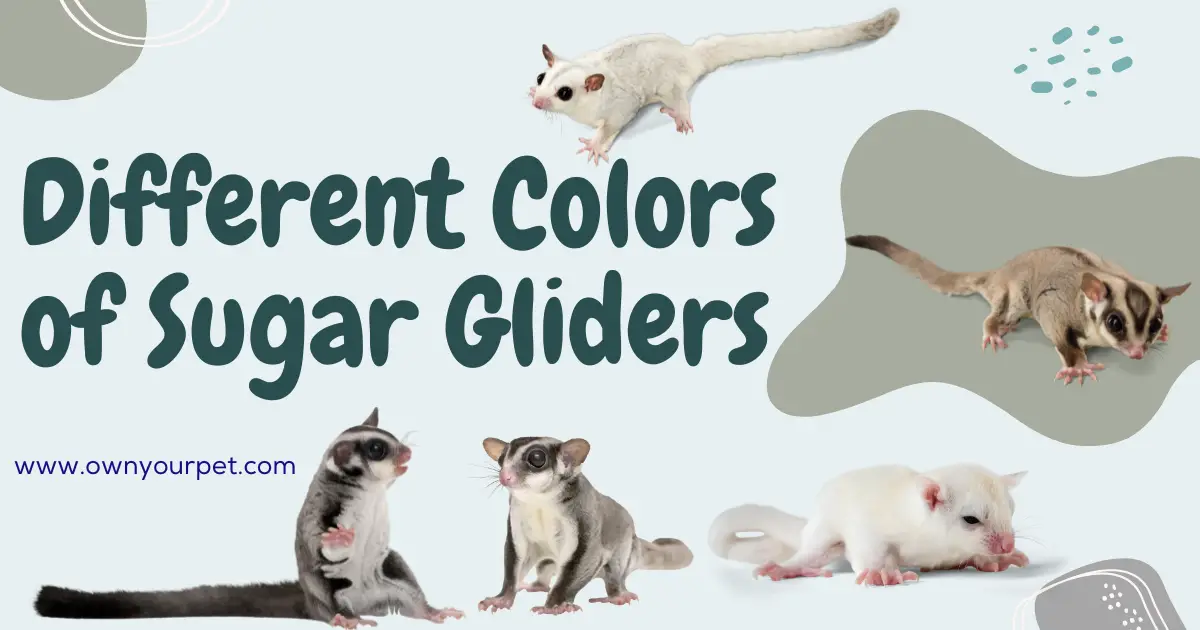Delving into the world of Sugar Gliders reveals an awe-inspiring array of colors. These charming creatures come in a variety of captivating shades, each contributing to their unique allure. From the striking contrast of the Black Beauty Glider to the vibrant and diverse hues of the Rainbow Glider, the different colors of Sugar Gliders offer a visual feast for the eyes.
Whether it’s the soft and gentle tones of the Caramel Glider or the bold and vibrant shades of the Platinum Genes, each color trait adds its own charm to these delightful creatures. From the gray markings to the white gliders, the color spectrum of Sugar Gliders is as diverse as it is enchanting.
Unveiling the Splendor: Exploring the Different Colors of Sugar Gliders
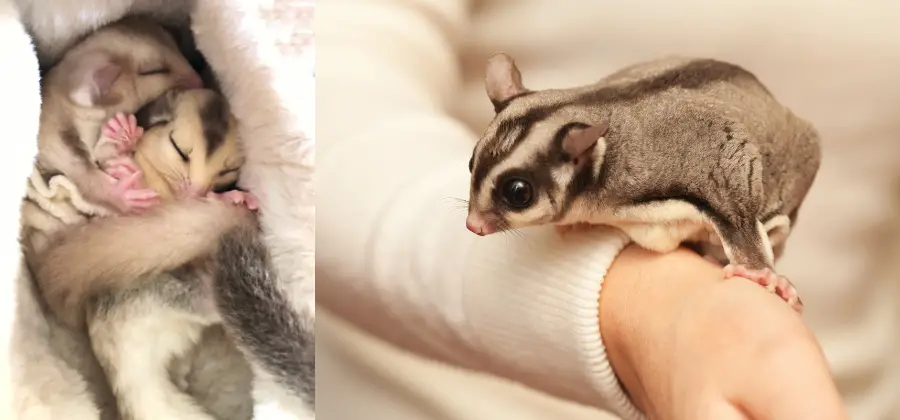
Sugar gliders are small, playful marsupials best known for their ability to glide through the air with the help of their unique membrane, called a patagium. They’re native to Australia, New Guinea and Indonesia and have quickly gained popularity as exotic pets due to their social nature and intriguing appearance.
What many new sugar glider enthusiasts may not know is that these captivating creatures can be found in a wide variety of colors and patterns, making each individual sugar glider truly unique.
While the most common sugar glider color is a gray-brown base with black and white markings, breeders have successfully produced more than 20 different colors and patterns by carefully selecting their breeding stock. Some examples of the variety of sugar glider colors include cinnamon, white, albino, and mosaic.
The variation in colors adds to the appeal of these adorable pets and offers potential owners a wider choice when it comes to adopting their own sugar glider.
If you’re considering bringing one of these fascinating animals into your home, understanding the differences in coloration can help you better admire the unique qualities of your future pet. Whether you prefer the classic look of the standard gray sugar glider or you’re drawn to more rare patterns and colors, each sugar glider is sure to bring joy and companionship to their new family.
Basic Sugar Glider Colors
Standard Gray
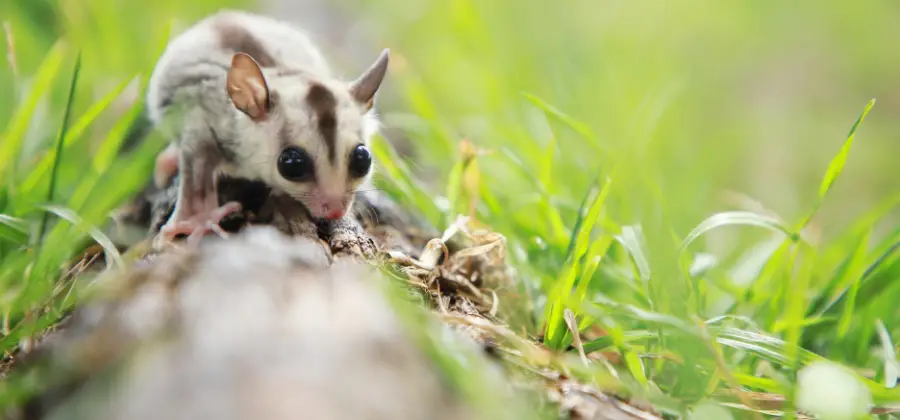
Standard gray sugar gliders are the most common color variation. They have a gray-brown base color with black and white markings on their face, ears, and legs. Their body is covered in a fine layer of fur, which appears primarily gray but can have some brownish tones mixed in. This color is often referred to as “wild-type” since it is the most common color seen in the wild.
Albino
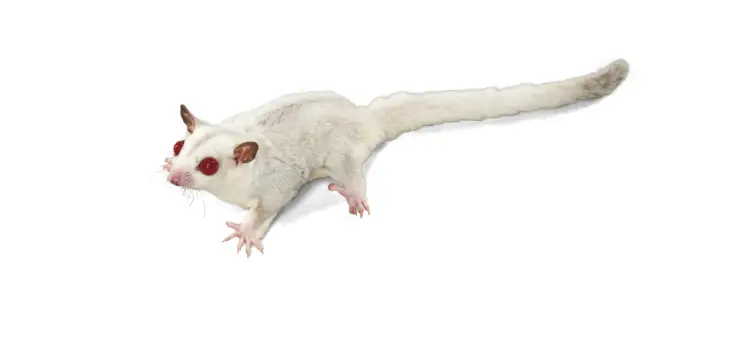
Albino sugar gliders are a rare color variation resulting from a lack of pigmentation. They have white fur and red eyes due to the absence of melanin. Albino sugar gliders stand out from the other color variations because of their striking appearance. They are produced from a recessive gene, making them more challenging to breed.
Leucistic
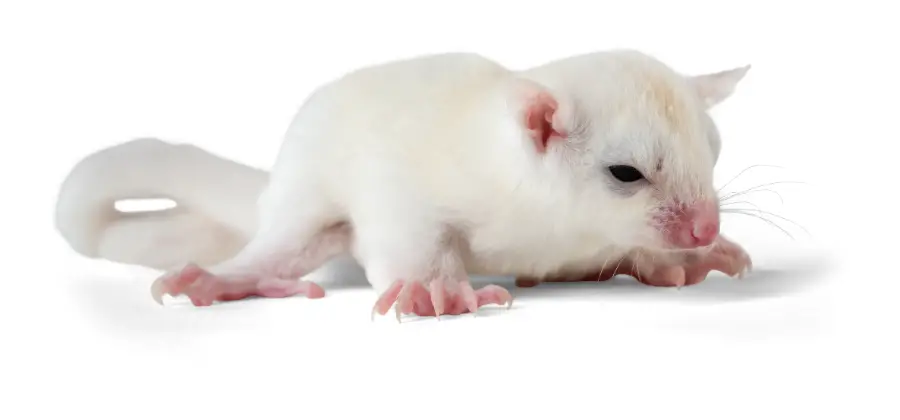
Leucistic sugar gliders have a purely white fur color, but their eyes are black or dark brown instead of red. They differ from albino sugar gliders in that they still have some pigmentation. Leucistic sugar gliders also result from a recessive gene, and they may appear similar to White Mosaic sugar gliders at birth.
Black Beauty
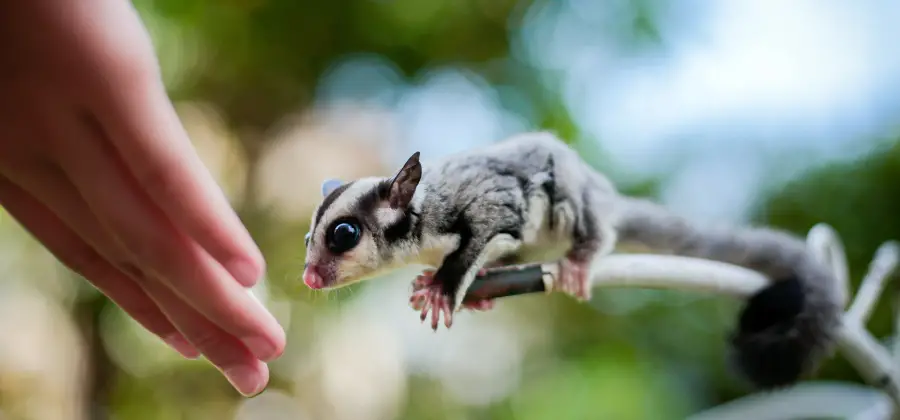
Black Beauty sugar gliders are characterized by their darker fur color, with a combination of black and brown hues. The markings are more intense than standard grays, providing a stunning contrast against the vibrant black fur. This color variation is less common but absolutely eye-catching.
Platinum
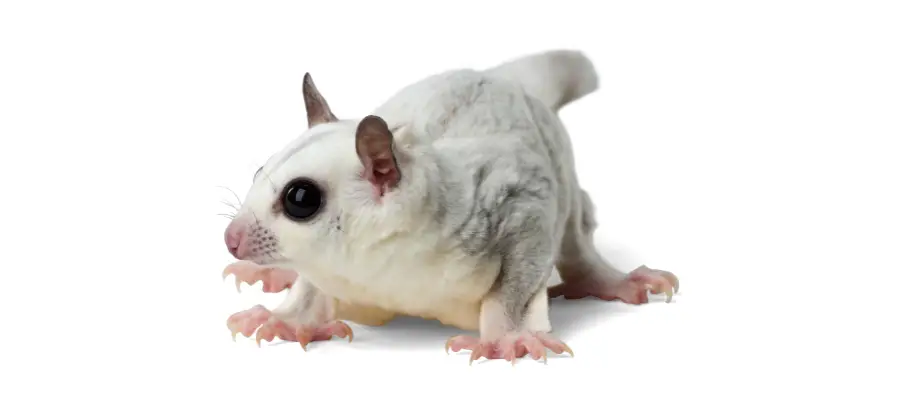
Platinum sugar gliders have a light silver-gray fur color with distinctive dark markings on their face, ears, and legs. They also exhibit a faint stripe on their back. Platinum sugar gliders are the result of a recessive gene, making them a rarer color variation. These special-colored gliders possess a unique and stunning appearance that sets them apart from the more common standard grays.
Sugar Glider Patterns and Mosaics
Sugar gliders are fascinating creatures, and one of the many things that make them stand out is their diverse range of colors and patterns. In this section, we’ll focus on some interesting patterns found in sugar gliders, specifically the White Mosaic and Ringtail patterns.
White Mosaic
White Mosaic sugar gliders exhibit a unique, primarily grey pattern with white markings. What sets them apart from other sugar gliders is the presence of white hairs on the tips of their tails or a large white tip, all thanks to a recessive gene. No two White Mosaic sugar gliders are the same, and their patterns can vary widely. These furry critters, like other sugar gliders, are social and playful animals.
Ringtail
Ringtail refers to the pattern found on the tail of certain sugar gliders. While not much information is available on this specific pattern, it likely involves a unique marking or color on their tails that gives them a different appearance from other sugar gliders. Just like White Mosaic and other mosaic sugar gliders, Ringtail sugar gliders possess distinct patterns that make them stand out among their peers.
The world of sugar glider colors and patterns is extensive and fascinating. With mosaic patterns creating one-of-a-kind creatures, these little animals truly offer a touch of natural art in our lives. Whether it’s the eye-catching White Mosaic or the intriguing Ringtail pattern, these extraordinary sugar gliders are sure to capture the hearts of animal enthusiasts.
Rare Sugar Glider Variations
In this section, we’ll discuss some rare sugar glider colors and patterns. These unique variations are a result of specific genetic crossings and can be quite fascinating to explore.
Caramel
Caramel sugar gliders have a distinct caramel-brown coloration with lighter cream-colored underbellies. These gliders often have a shorter nose on a more rounded face “Lion”. Their fur is soft and velvety, making them an attractive option for many sugar glider enthusiasts.
White Tip
The white-tip sugar glider stands out due to its primarily gray color, with the same pattern all over its body and head. The unique feature of this sugar glider is the presence of a few white hairs to a large white tip on the end of its tail. However, breeding these sugar gliders is challenging, as their distinctive appearance comes from a recessive gene.
Piebald
The piebald sugar gliders are rare and fascinating due to their unique patterned fur. Piebald gliders have patches of pigmented hair scattered throughout their otherwise white fur, resulting in a patchwork-like appearance. Each piebald sugar glider has its own unique pattern, making them highly sought after among collectors and enthusiasts.
Melanistic
Melanistic sugar gliders are characterized by their striking black fur across their bodies, with the exception of a white or cream-colored patch on their chest. These gliders often have black stripes running from their ears to their eyes, giving them an even more dramatic look.
Melanistic gliders are a variation of the classic gray sugar gliders, as they share a gray base color but have a pitch-black stripe down their back and dark circles around the eyes.
Mahogany Red
Another rare sugar glider color is mahogany red. As the name suggests, these gliders have a unique mahogany red tone to their fur, which can range from a deep red to a more muted reddish-brown. Mahogany red gliders maintain the standard sugar glider appearance but with a warm, rich hue to their fur, setting them apart from their more common counterparts.
Watch Sugar glider colors tpm mosaic and classic
Genetics of Sugar Glider Colors
Genes and Dominance
Sugar gliders, like all living organisms, inherit their physical traits from their parents through genes. The color of a sugar glider’s fur is determined by specific genes that affect the production of pigments like melanin. There are cases where the gene is dominant, which means that the resulting color or pattern will be expressed if even just one parent has that gene.
Some sugar gliders exhibit unique traits such as red eyes and black knuckles. The red eyes are typically seen in ruby leucistic sugar gliders, which are characterized by a combination of two recessive color genes. This combination causes red eye color and white fur. Conversely, the black knuckles are characteristic of platinum sugar gliders, which have a dominant gene for their platinum coloration.
Breeding for Color Variations
Breeding sugar gliders to produce specific color variations requires a good understanding of genetics and the dominant and recessive traits involved. Here’s a general guideline on breeding for color variations:
- White Mosaic: These sugar gliders have white fur and may have leucistic genes. To breed a white mosaic glider, it must be born almost entirely white. Breeding two white mosaic gliders will increase the chances of producing white offspring.
- Ruby Leucistic: As mentioned earlier, ruby leucistic sugar gliders have a combination of two recessive color genes that result in red eyes and white fur. Breeding two ruby leucistic gliders will increase the likelihood of producing offspring with this color mutation.
- White Tip: These sugar gliders have a gray color with some white hairs or a white tip on the end of their tail. Breeding them can be challenging due to the recessive gene responsible for this trait. Both parents must carry the gene to increase the chances of producing white-tip offspring.
Understanding the genetics involved in sugar glider colors is essential for breeders who aim to produce specific color variations. Responsible breeding practices ensure that unique and beautiful color patterns continue to thrive in these fascinating creatures.
Caring for Your Sugar Glider
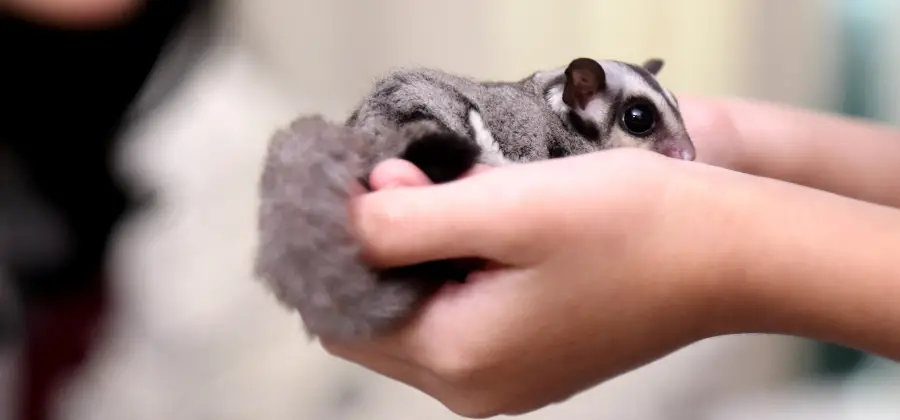
Diet
Sugar gliders are omnivorous animals, and their diet should consist of a variety of fruits, vegetables, and protein sources. An ideal sugar glider diet might include:
- Fresh fruits: apples, bananas, grapes, and berries
- Fresh vegetables: carrots, peas, green beans, and leafy greens
- Protein sources: boiled eggs, insects (like mealworms and crickets), and small amounts of lean meats
It’s essential to ensure that your sugar glider is getting all the necessary vitamins and minerals it needs. You can achieve this by providing a commercially available sugar glider pellet mix or supplementing their diet with a multivitamin specially formulated for them. Consult your vet to get recommendations on the best diet plan for your sugar glider.
Habitat
To keep your sugar glider happy and healthy, you must provide them with a suitable living space. Here’s what you need to create the perfect habitat for your pet:
- Cage size: Opt for a tall cage with horizontal bars to allow your sugar gliders to climb and explore. A minimum cage size of 24 inches wide, 24 inches deep, and 36 inches tall is recommended.
- Furnishings: Equip your sugar glider’s habitat with a variety of toys and accessories like branches, ropes, ladders, and hammocks. These will help in promoting exercise and mental stimulation.
- Nesting box: Provide a cozy nesting box or pouch in a high corner of the cage. This will give your sugar glider a safe and comfortable place to sleep.
- Temperature & Humidity: Maintain the habitat temperature between 70 and 90 degrees Fahrenheit, with a humidity level of around 50%. You can use a thermostat and hygrometer to monitor these conditions.
- Cleaning: Clean the cage regularly to maintain proper hygiene. Remove any soiled bedding, uneaten food, and droppings daily. Furthermore, do a deep clean once a week by washing the cage with warm water and a mild pet-safe disinfectant.
Remember to always keep an eye on your sugar glider’s health and behavior. If you notice any changes, contact your veterinarian to address any potential issues promptly.
Choosing the Right Sugar Glider
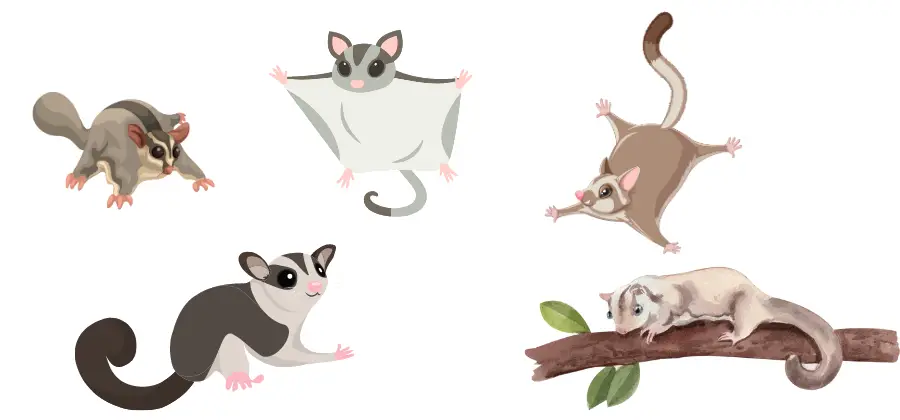
When it comes to owning a sugar glider as a pet, it’s essential to choose the right one based on their breed, color, and pattern. There are several sugar glider colors and patterns to choose from, including standard gray, white, albino, and even mosaic. In this section, we’ll talk about selecting a breeder and understanding exotic pet guidelines.
Selecting a Breeder
Finding a reputable sugar glider breeder is crucial, as it ensures you get a healthy, well-socialized pet. Here are some things to consider when choosing a sugar glider breeder:
- Experience: Look for breeders with experience in breeding sugar gliders and in-depth knowledge about their care and needs.
- Health Guarantee: A good breeder should provide a health guarantee for their sugar gliders, proving that they are free from genetic illnesses or other health issues.
- Cleanliness: The breeder’s facility should be clean and well-maintained, indicating proper care for the animals.
- Availability: Reputable breeders typically have a waiting list, but be prepared to wait for the right sugar glider to become available. Avoid impulse purchases or settling for a less than ideal breeder.
Exotic Pet Guidelines
Sugar gliders are considered exotic pets, and as such, they come with specific rules and regulations. Be aware of the following guidelines before choosing a sugar glider as a pet:
- Legality: Check your local and state laws to ensure that owning a sugar glider is legal in your area. Some states or cities may require permits to keep a sugar glider as a pet.
- Veterinary Care: Find a vet specializing in exotic pets who can provide proper care for your sugar glider. Regular check-ups, vaccinations, and emergency care should all be available from your chosen vet.
- Housing Requirements: Sugar gliders require ample space and specialized housing, which includes a large cage, climbing branches, and nesting options.
- Diet: Sugar gliders have unique dietary requirements that must be met for optimum health. A diet consisting of fruits, vegetables, insects, and proteins is essential for your sugar glider’s well-being.
- Socialization: Sugar gliders are social animals and thrive in the company of other sugar gliders. Consider adopting at least two sugar gliders to promote their physical and emotional health.
With this information in mind, you’ll be better prepared to choose the right sugar glider for your family. Good luck finding your perfect pet!
Geographical Distribution

The sugar glider (Petaurus breviceps) is a small, nocturnal marsupial known for its ability to glide through the air. These fascinating creatures can be found in a range of colors and patterns, adding to their appeal as pets and making them a popular subject of interest.
Sugar gliders are native to Australia, Indonesia, and other surrounding islands. In Australia, they can be found in various habitats, such as rainforests, eucalyptus forests, and woodlands. These arboreal animals are skilled at traversing tree canopies, making their home in hollow tree trunks or nests made from leaves.
Indonesia is another country where sugar gliders can be found in the wild. Here, they inhabit dense rainforests, making use of their gliding abilities to move efficiently through the trees in search of food.
Their scientific name, Petaurus breviceps, indicates their unique gliding ability and preference for sugary foods such as sap and nectar. The geographical distribution and habitat preferences of sugar gliders can be summarized as follows:
- Australia
- Rainforests
- Eucalyptus forests
- Woodlands
- Indonesia
- Dense rainforests
It’s important to note that the natural habitat of sugar gliders plays a crucial role in determining their colors and patterns. The standard gray sugar glider is the most common type found in the wild. However, there are over 20 different color variations that might be seen, depending on the specific region within Australia or Indonesia.
These regional differences in color and pattern can help sugar gliders blend seamlessly with their environment, ensuring their survival in the wild.
Overall, the sugar glider is a fascinating creature with a unique set of adaptations for life in the trees. Its distribution across Australia, Indonesia, and neighboring islands highlights the adaptability of this small marsupial and provides endless opportunities for research and observation.
What are the different colors of Sugar Gliders?
Sugar Gliders come in a wide range of colors, including but not limited to gray, black, white, caramel, platinum, and various combinations of these colors. Each color variation adds its own unique charm to these delightful creatures.
Conclusion: Different Colors of Sugar Gliders
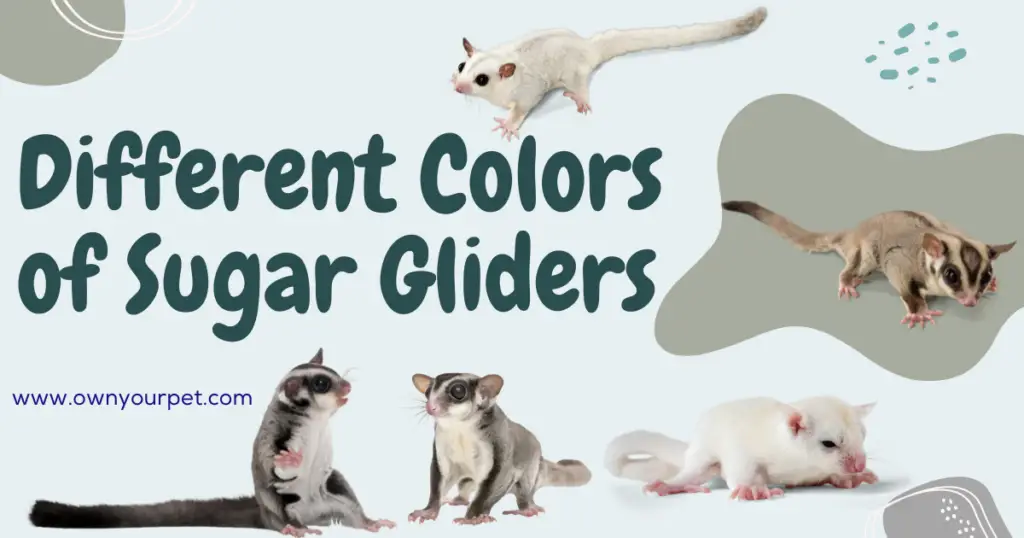
In conclusion, the world of Sugar Gliders unveils a breathtaking array of colors, from vibrant Rainbows to mesmerizing Black Beauties. With hues like caramel, platinum and unique markings, these charming creatures captivate the eye. Immerse yourself in their enchanting realm and embrace the beauty of their diverse and captivating colors.
